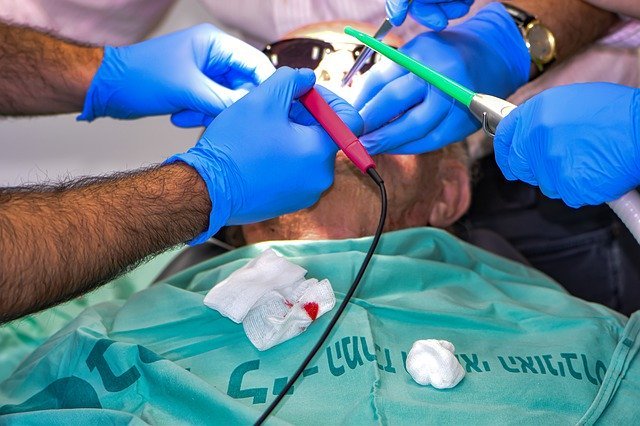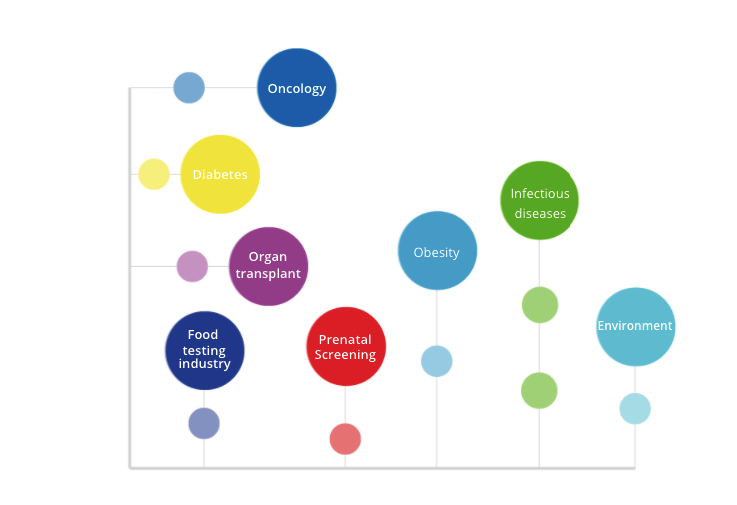With the tremendous advancement in tech, we have some of the most really great advancements in medical science. The introduction of digital PCR completely revolutionized the medical world as it is now much easier for medical professionals to provide accurate nucleic acid quantification. With the help of this amazing technology, it is much easier to detect target cells with low abundance and monitor certain changes on the cellular level.
The whole concept was first introduced and described in 1992 by Sykes et al. And later on based on his introduction a method was devised through which any target sample was diluted to an extent where it was possible to examine each of the separated partition with the help of fluorescent probes. This process is known as Digital PCR and with Digital PCR company Stilla Technologies we are ready to make our future healthier.
This amazing company also developed a groundbreaking technology that is known as THE
NAICA™ SYSTEM WORKFLOW, which will completely change the process of absolute quantification of nucleic acids with the help of the cutting edge technology that is used by this software.
 With just 4 simple steps you can get absolute results.
With just 4 simple steps you can get absolute results.
- You start with pipette sampling.
- As you are ready with a sample, you can start with the generation of droplet crystal and the amplification process.
- After a certain amount of time, you can start reading the crystals using 3 fluorescent channels.
- Lastly, you can explore the results that you get with this process using intuitive visuals.
With sample partitioning in the dPCR system, there are endless possibilities with this technology. Here are some of the most popular digital PCR applications:
. Liquid Biopsy
Starting with liquid biopsy you have noninvasive tests that are capable of detecting cancer cells along with DNA sheds caused due to tumor in blood. All this makes this effective and useful with cancer detection and monitoring.
Moreover, liquid biopsy is completely safe for humans and can be repeated over time in order to detect harmful cells and monitor their progress inside your body. This is why it is much better than tumor tissue biopsies.
In addition to all that, this amazing and useful technique can also help you in detecting different types of cancer cells, biomarkers, the effectiveness of the treatment process, along with the detection of different diseases.
. Copy Number Variation
With the help of digital PCR, it is possible to get accurate CNV quantification in single wells. Additionally, you also get really accurate results that you can use in order to identify different CNVs that you can inherit genetically.
. Rare Sequence Detection
Rare sequence detection is also possible with the help of dPCR in a more efficient way as you would be able to detect cancer cells that were impossible to detect earlier. Moreover, it is possible that you can monitor new mutations and duplications as they arise in cancer patients.
Moreover, it is also possible to detect viral loads across our body that was not possible earlier. This noninvasive process is completely safe making it much easier for patients as well as doctors to monitor the progress of their patients.
. Single-Cell Analysis
One of the most challenging digital PCR is single-cell analysis as it is quite difficult to isolate a single cell and get accurate results from the process. This is why with the help of digital PCR you can easily get precise detection of target cells of up to 4 targets through multiplexing. Moreover, what makes this technique versatile is the fact that you can combine it with other techniques making really useful
. Pathogen Detection
Digital PCR is extensively used in microbiology because of its capability of pathogen detection in the human body and food items. Moreover, it is also possible to test microbial drugs and their effectiveness with this amazing technique.
. Next-Generation Sequencing
With digital PCR you can boost and make the process of NGS more effective. This will save a lot of time and money. Besides that, you also get accurate quantification and better representation of different low-abundance species.
. Gene Expression
Lastly, we use digital PCR in order to analyze both RNA and DNA. You can detect and measure genomic DNA methylation because of its increased sensitivity giving you absolute quantification.
Conclusion
There are endless possibilities with digital PCR and with the rise in technology we can expect more and more development in this technology making it more convenient and efficient in the medical industry.


